Kinkaku-ji Golden Pavilion
Categories: Asia | Design and Architecture
By Pictolic https://pictolic.com/article/kinkaku-ji-golden-pavilion.htmlToday we want to introduce you to the beauties of Kinkakuji — the Golden Temple — one of the most common symbols of Kyoto, the ancient capital of Japan.
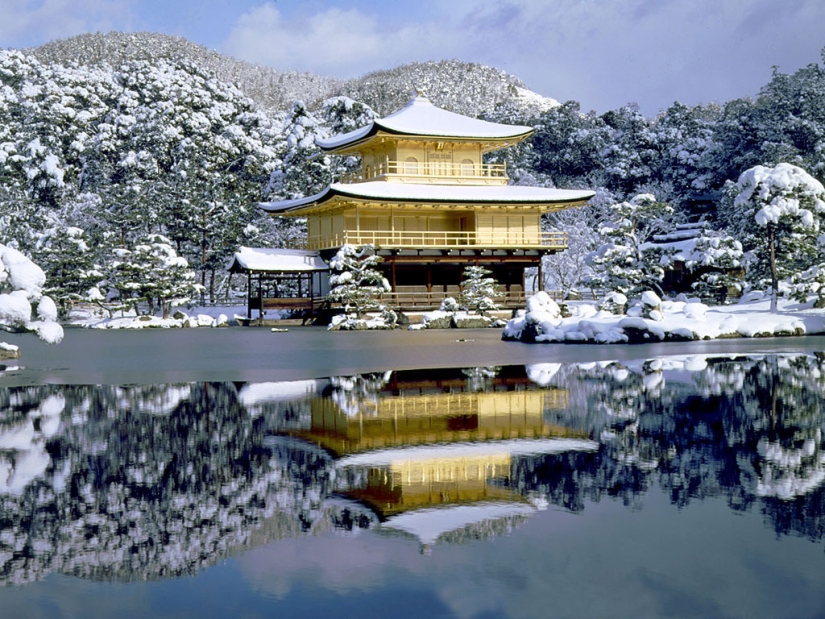
The Golden Pavilion is considered one of the most beautiful and most popular temples in Kyoto. The pavilion was built in 1397 as the personal residence of the powerful shogun Ashikaga Yoshimitsu, known for his love of art.
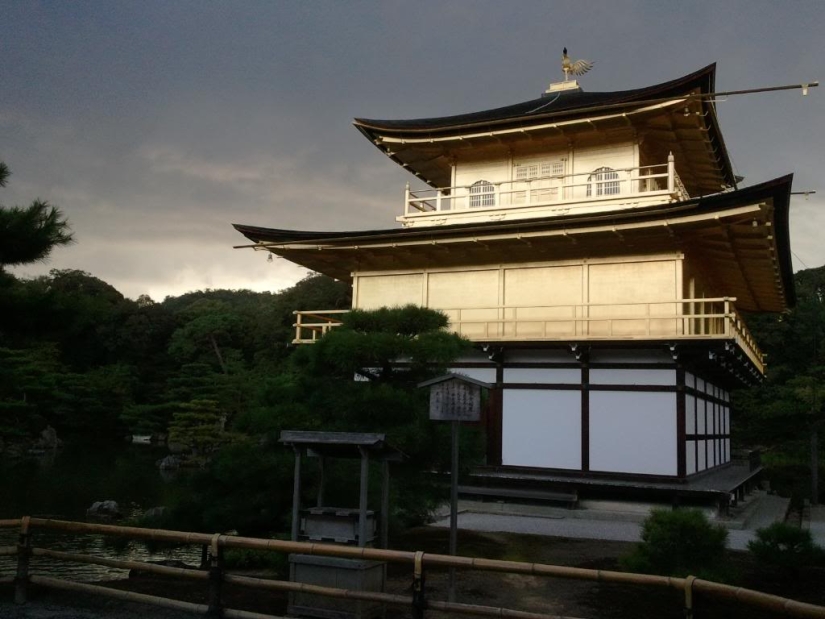
In this magnificent place, the shogun lived in his declining years, when he was already bored with politics and he completely immersed himself in Buddhism. After the shogun's death, his son, fulfilling his father's will, turned the Golden Pavilion into a Zen temple.
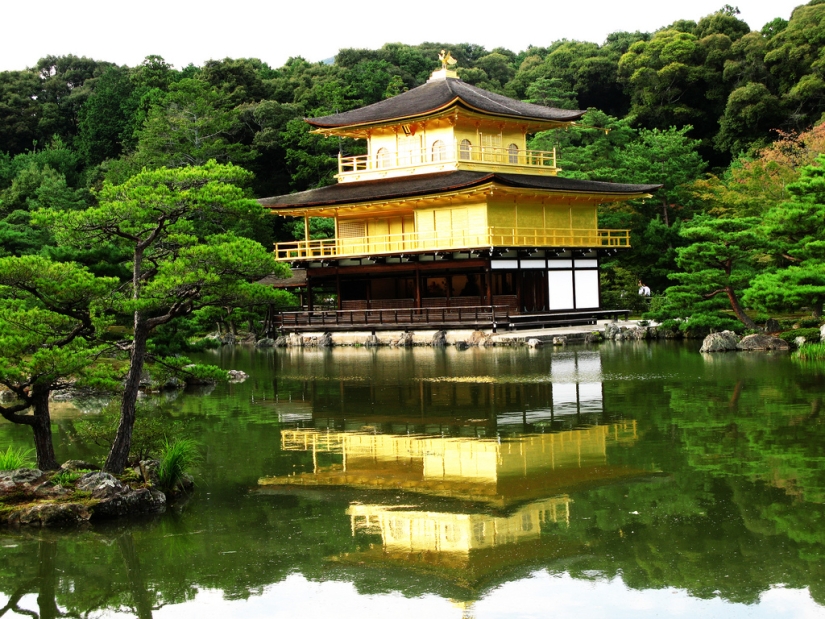
During the Onin War (1497-1477), the temple buildings burned out several times, and they had to be restored. In July 1950, the Golden Pavilion was burned to the ground by a 22-year-old distraught novice Hayashi Dzekan, who immediately after the deed tried to commit suicide. But he failed to do this, and the novice was sent first to prison, and then to the hospital, where he died in 1956 from tuberculosis. The Pavilion building had to be completely restored again.
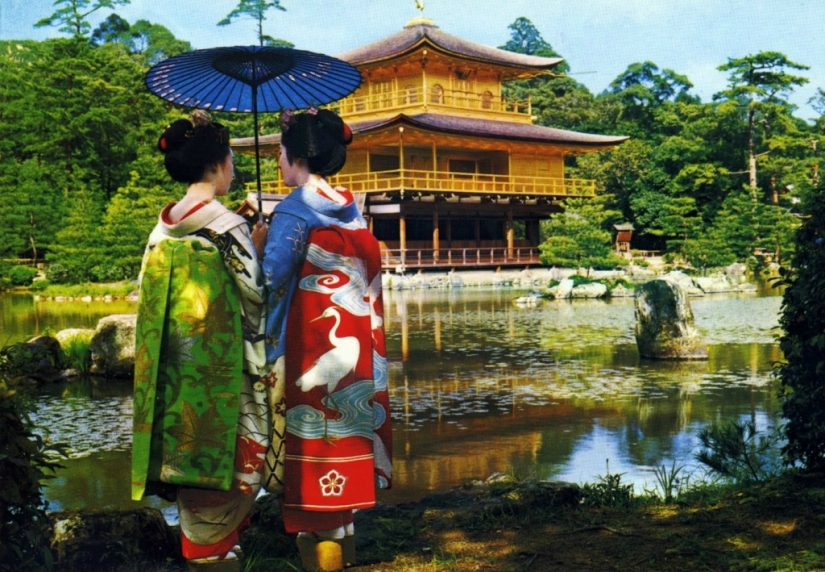
In 1984, the Pavilion underwent a large-scale restoration, as a result of which the golden layer was made even more powerful. The restoration was fully completed only by 2003. Experts say that today there is nothing left of the original ancient temple, and what we see is an exact copy.
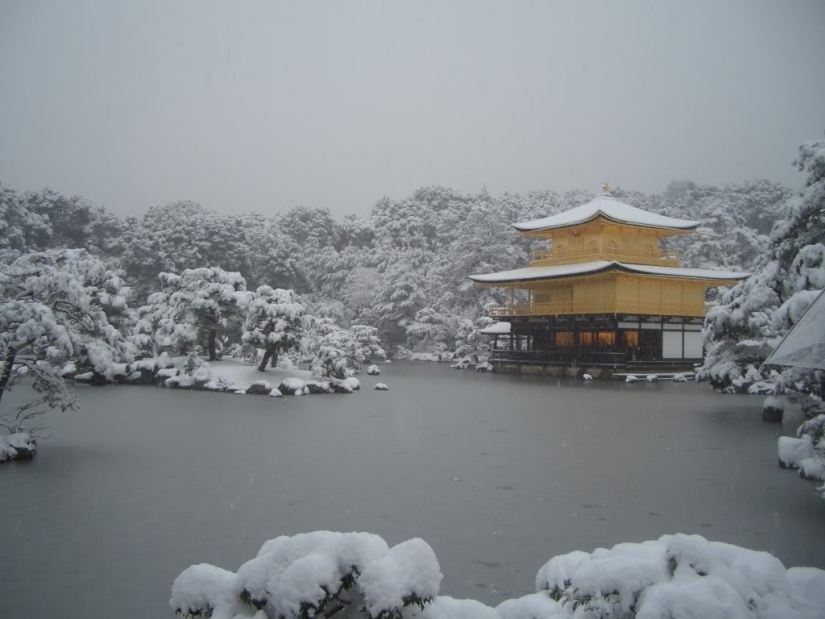
The Golden Pavilion is so called for a reason: the entire wooden structure, except for its lower floor, is covered with a powerful layer of pure gold leaf. Each of the three floors of the Golden
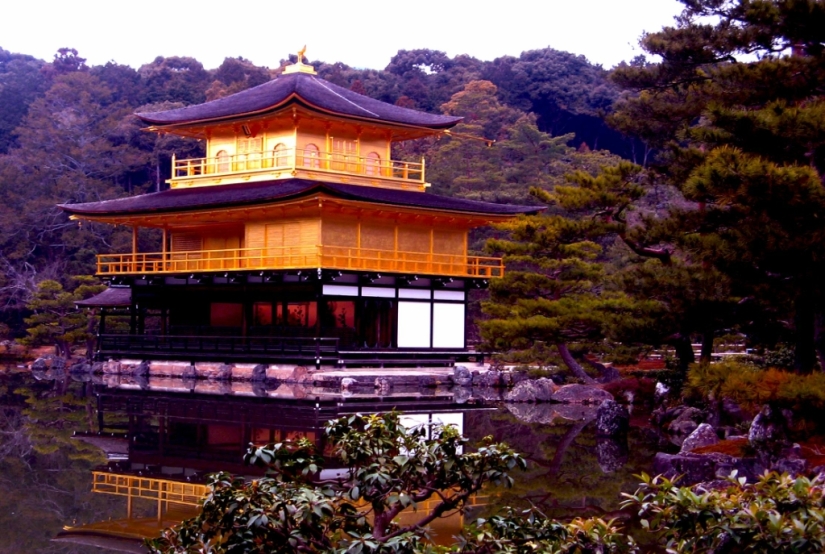
The pavilion is made in different architectural styles and has its own name. The first floor is called the Purification Hall. It is surrounded by a magnificent veranda overhanging a Mirrored Lake with the purest water, and the room itself serves as a reception hall. For the construction of the first floor, only unpainted wood and white plaster were used. The floor itself is designed in the style of classical palace architecture. Sliding screens are mounted in the walls, with which you can adjust the lighting of the inner hall.
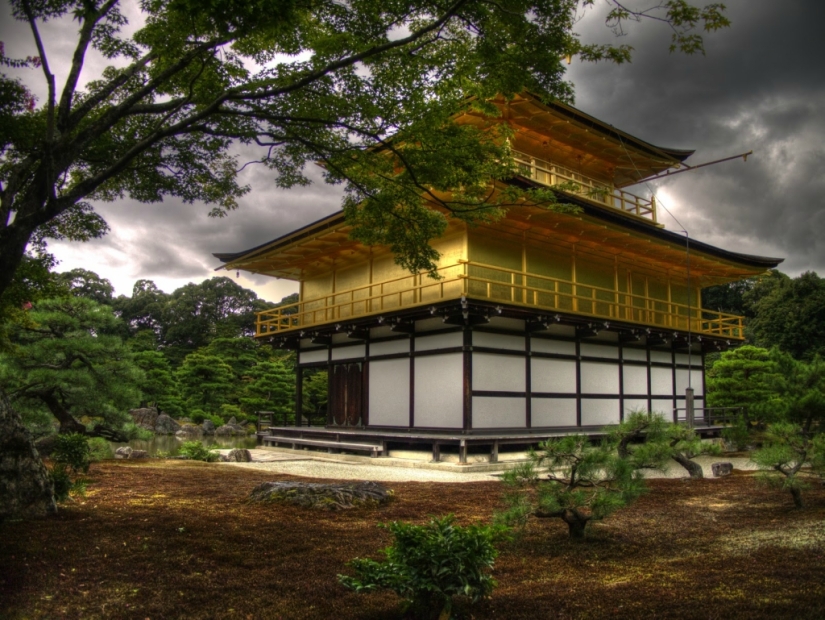
The second floor is named after the Cave of Mercy and is designed in the style of samurai residential apartments. There is a Buddha Hall and a small shrine dedicated to the goddess of mercy Kannon.
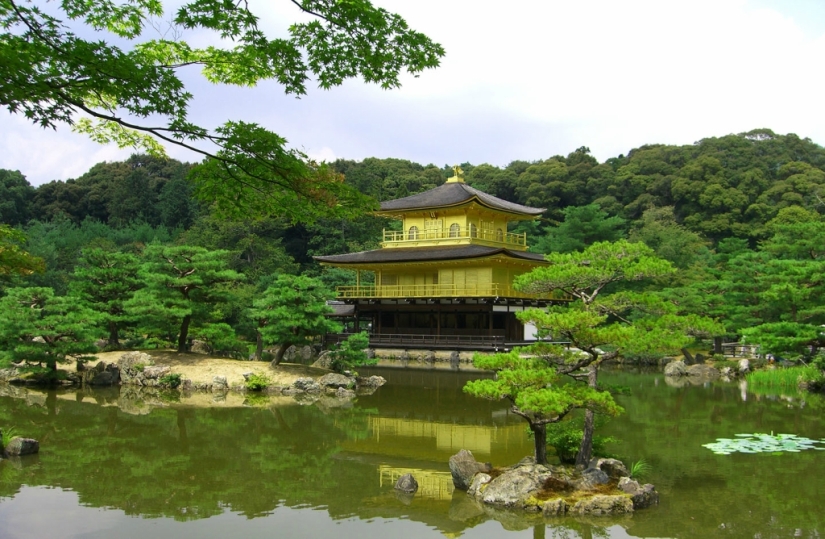
The third floor is called the Top of the Void, and it is built according to the canons of a Zen temple. The walls of this floor are covered with gold leaf both outside and inside, which creates incredibly beautiful lighting effects in the rays of the Sun.
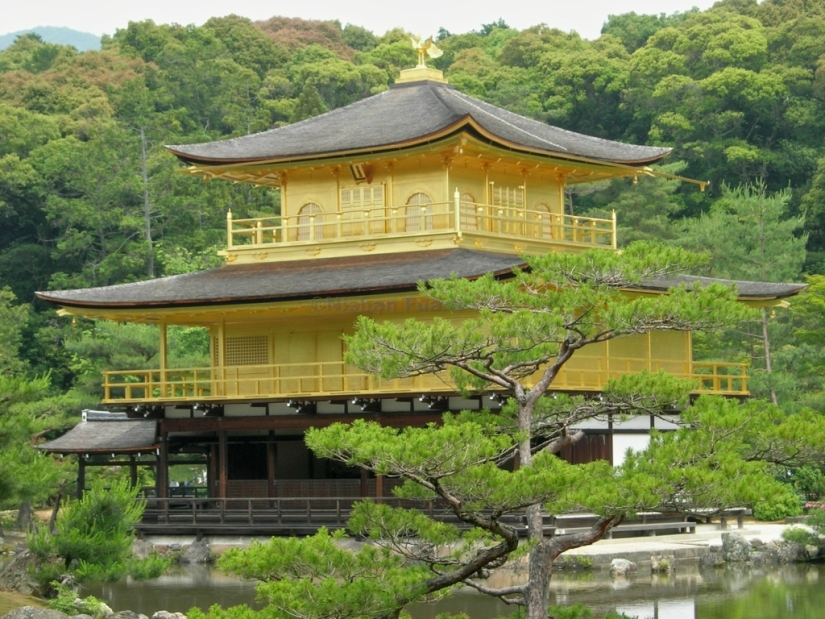
The Golden Pavilion is surrounded by an amazingly beautiful walking park. In the Mirror Lake, on the shore of which the Pavilion stands, there are 10 small picturesque islands, and many stones of bizarre shapes and colors rise above its water.
Recent articles

In the fall of 1972, Bill Yates traveled through the countryside in the vicinity of Tampa, Florida. At that time, he was studying ...

Severe cold weather does not give up its positions. We offer you to admire the magical photos of winter Europe, because snow and ...

Vladimir Lyubarov is an artist from the countryside who paints pictures of real life. But he brings amazing characters, birds, and ...